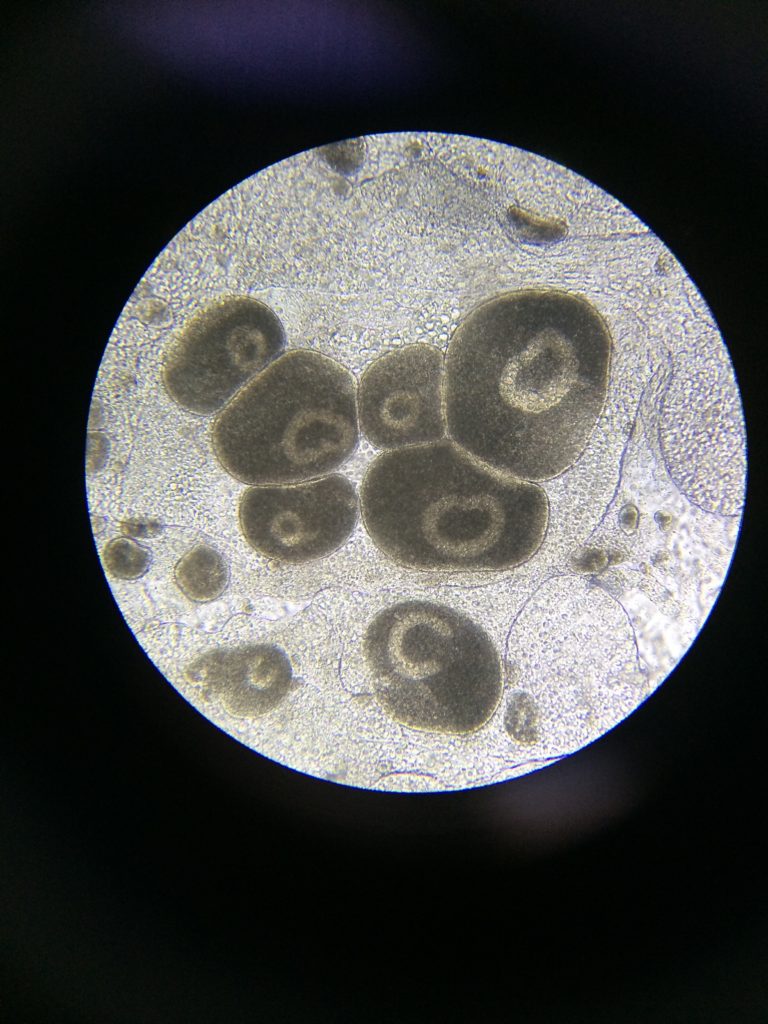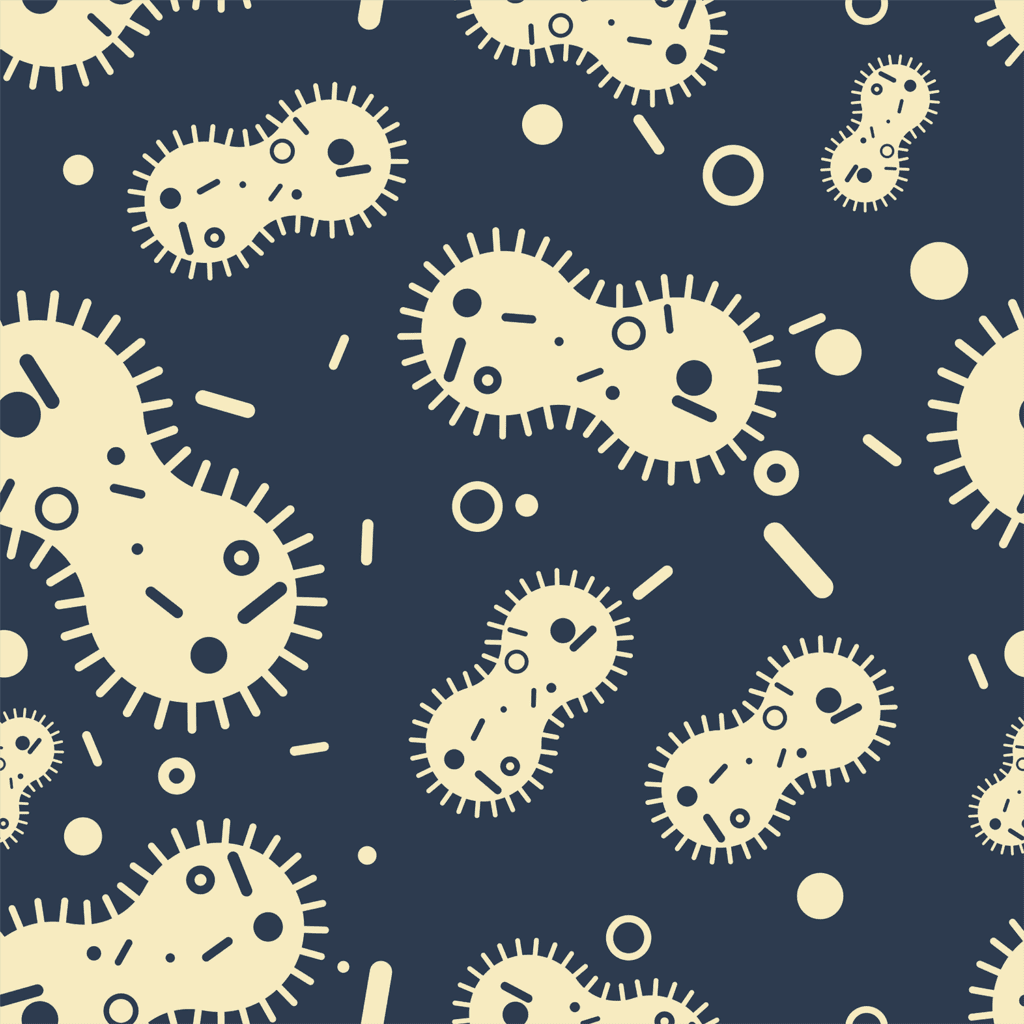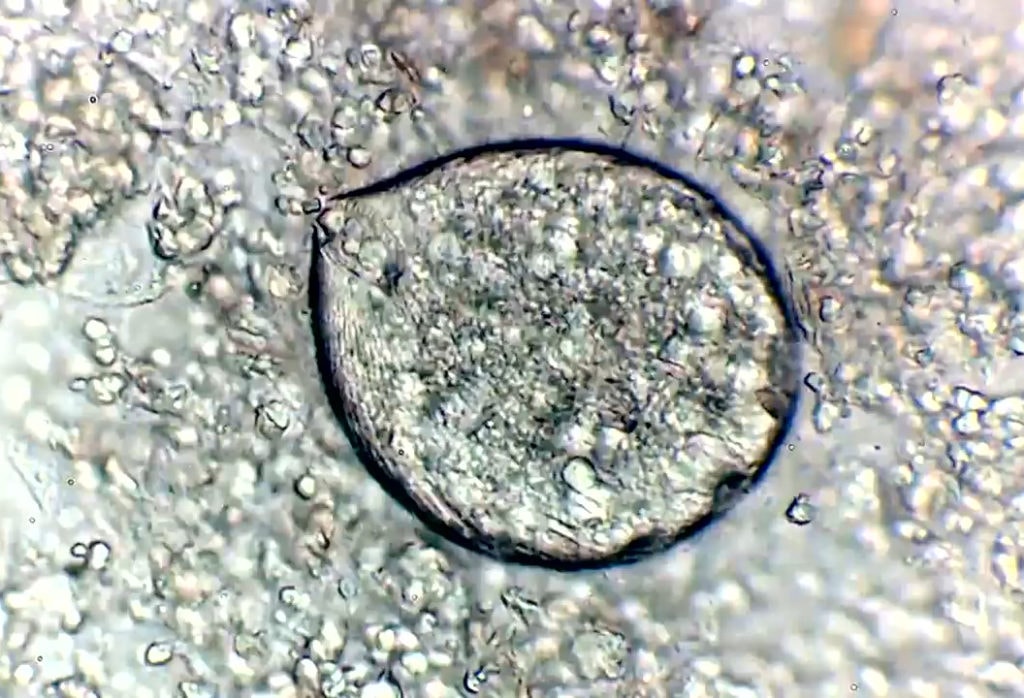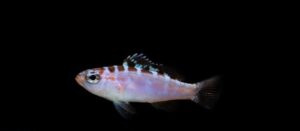Across all organisms on Earth, disease is a large factor in preventing the successful survival of creatures. Fish in the saltwater aquarium hobby are no exception to this. It is not rare to see a whole aquarium system devoured by a disease. You will often see fishes at the place you buy your fish infected with these diseases. Of course, these diseases are a nuisance to all hobbyist and it is important to understand how they function when trying to resolve an issue with them.
Ich
Ich ( cryptocaryon irritans) is one of the most common diseases within the saltwater aquarium hobby. This disease can be described as white dots or bumps that appear on the scales or outside of a fish. When it comes to appearance, it looks very similar to Marine Velvet, although is very different. Ich is generally called the common cold of aquarium fish, but if it is not treated or addressed, it can kill a fish or whole group of fish.
cryptocaryon irritans) is one of the most common diseases within the saltwater aquarium hobby. This disease can be described as white dots or bumps that appear on the scales or outside of a fish. When it comes to appearance, it looks very similar to Marine Velvet, although is very different. Ich is generally called the common cold of aquarium fish, but if it is not treated or addressed, it can kill a fish or whole group of fish.
Fish are first infected by the free-floating stage of Ich called Theronts. The parasite finds a fish to host it so it can feed off the flesh of the fish. At this point, it is called a Trophont. It spends three to nine days feeding of the fish by burrowing into the flesh of the fish and consuming it. This causes major damage and is also the stage that can be seen as white spots on the fish. After the three to nine days, the white spots, which are parasitic cysts, release and go towards the surface of the substrate within the tank or environment. At this stage, the parasite is known as a Protomont. Once it attaches to the substrate it is known as a Tomont. Then the Tomont spawns 200 to 1,000 cells called Tomites after 3-72 days. The Tomites then become Theronts once they become free floating. They have 48 hours to find a host before they die of starvation. The free floating stage is the stage in which medication will be effective. Knowing this information and that a complete ich cycle takes about two weeks, you can plan your quarantine setup and time accordingly.
[generalhelp]
It is key to recognize how the disease could enter a tank or become apparent in a tank to prevent ich from affecting your aquarium. Ich can enter through an infected specimen, which is the most obvious possibility but is commonly pushed aside by beginners.
Imagine a scenario where you have a beautiful group of five to eight fish in your tank and you decide you need one more fish. You research the fish and make sure it is compatible with your system and other inhabitants. You determine this fish will do great in your tank, so you go to the local fish store and you find the fish you want. You look at the fish for a couple of seconds and tell the employee you will buy it. Then, you proceed to take the fish home and acclimate it to your tank. After a good fifteen-minute acclimation process, the new addition is put into your aquarium. Now if you do not see the mistakes in this situation, that is an issue. One mistake was not closely examining the fish before buying it to make sure it appears to be healthy. The next mistake was not quarantining the fish or dipping it. Now this fish could enter the tank as a diseased fish because it was not treated or examined. Eventually, you start to see your fish show white spots all over them and after some time without treatment, potentially all of you fish have diminished. This is the most likely way ich or any disease or pest can enter a system. Of course, there are other factors that promote ich, like temperature, but this is the largest area of concern.
Now, why is it that fish at found fish stores or pet shops so commonly have diseases? The simple answer is stress. Stressed fish have weakened immune systems, therefore ich can easily infect them. Fish commonly become stressed during transport or being introduced to a new tank. These fish coming from the ocean most likely have ich and other diseases, but they are not susceptible until they become stressed. They become stressed, their immune systems deplete, and then they are infected.
Treatment for ich is simple. You can quarantine your fish with medication, do freshwater dips, or a combination of both. There are methods to treat an already infected tank, but it is best to avoid it from the start to keep you and your fish from further stress.
Marine Velvet
It looks like ich but is much more lethal. Marine Velvet (Amyloodinium ocellatum) is like the much more deadly and more contagious version of ich. It is like the fish form of human leprosy. Marine velvet spreads faster and kills faster, as well is much more difficult to treat.
First, the Marine Velvet life cycle is very similar to that of the ich life cycle. The main difference is that the reproduction and cell division cell is all done while the parasite is on the fish. The reproduction happens within the cysts on the fish and then a free floating form is simply released to find a host to repeat the process. What makes Marine Velvet more dangerous is the faster reproduction time and fewer stages. This allows the disease to spread from fish to fish at a faster rate than ich would. Marine Velvet is also hardy, in comparison to ich, and can penetrate a fish’s slime coat easier, which makes the disease more deadly. This disease can easily wipe out a whole aquarium of fish in a fairly short amount of time.
Marine Velvet can enter a saltwater aquarium the same way ich can; through the introduction of a new fish. While, fish can build a tolerance to ich, they cannot with Marine Velvet. If it is in your tank, one of your fish will most definitely get it and soon they all will, if not treated. The best thing to do is to prevent it at all cost.
Marine Velvet can be treated by copper in a quarantine setup. Note that copper will kill all and every type of invertebrate or crustacean in the system it is applied to, including shrimps, crabs, corals, and snails. Marine Velvet and Ich are both types of crustaceous parasites, which explains why copper is effective in killing them. Also note that copper can kill your fish if you do dose too much. Avoid this by following the instruction found on the label of the bottle or container the copper comes in.
Symptoms
Symptoms of both Ich and Marine Velvet include white spots on the fish, refusal to eat, holding fins close to the body, increased respiration, and scraping the body on rocks as result to irritation or discomfort caused by the parasites. The difference between Ich and Marine Velvet symptoms is that Marine Velvet is much more severe and happens faster.
Tangs are notorious for being the most susceptible to ich, which they are. If you will only quarantine or treat one kind of fish, it should be tangs. They do well with copper medication and a well set up quarantine system. These fish should be number one on your “to quarantine” list. There are though, fish that you cannot quarantine or treat with copper. For this reason, t is important to be sure you research the fish you are going to buy to be sure it will not have any issues with your method of disease prevention.
Marine Velvet and Ich are the most recurring diseases within the saltwater aquarium hobby. Although they are very similar, Marine Velvet is much more detrimental. With an unabridged understanding about the disease, they can both be treated and prevented.
[generalhelp]






Cole presley says
These are my worst reef tank fear
E says
Great article!
Nathaniel Konkel says
I agree!
James McBryde says
Still new at this hobby (one year in) with a Red Sea Max 650. Had two rounds of ich but have beaten it back with long-term hyposalinity. Things are going well now and even have a copperband butterfly that is doing very well.
Nelly Acevedo says
Such helpful info. Love your blogs. Thank you
James McGilvray says
I’ve been super lucky so far not to have dealt with anything.
pdeolim says
And this is why we quarantine, to give us a better rate/chance of success.
sally says
What a nightmare. First the infection then the treatment. The stress on the fish, the stress on ones self and then the hope you can save your livestock. It’s worse than a measles outbreak in humans.
smash2799 says
Diseases stink. Lost a lot of fish a few years ago to ich
Austin Byers says
Very helpful!
Karl Halmstad says
Very informative
Sage Cowley says
Had Marine Velvet and man it is no joke, maintain tanks for a living and usually happens when folks get fish from lfs and it wipes out a tank. ive had a couple fish like survive but 90 percent of the fish die in my experience of getting it the handful of times i have.
Doug Talley says
Quarantine fish and youll have better success
Jose says
I need to set up a QT, I’ve been playing with fire!
Jerry L Thompson says
Ouch. Very scary.
Drew Pearce says
Awesome!
Larry says
I had a Kole tang that once developed ich. I tried a few things such as buying a neon goby to assist with cleaning the body of my tang. I also remember feeding nori sheets. Eventually, the fish cleared of the ich which took almost a week.
trevor says
With every new fish i QT. Start with TTM and then directly into an observation tank. Trying my best not to get my friends sick!
brandonbjones1 says
I would hate to have that in my tank I wouldn’t know what to do
Rondy says
I have a buffalo tang and he had ich
But now he’s fine
cwalshjr1 says
Good to know information
Duy Le says
Omg. Scary
Kenneth O Thomas says
I love them
Eric Serrano says
They can kill your fish but you can get through it by researching and understanding how to feed the fish to get rid of ich and by taking and separating the fish in a separate tank and then do water changes to dilute is much it is possible
Rob Colletti says
Funny in 15 years I’ve never QT anything and have only dealt with Ich once and never anything else disease wise.
robert vice says
I’ve been lucky the closest thing if had to a disease is hair algae
Jeff Dick says
Ich is never fun. The best way to get rid of it is QT and copper. Sadly, fish don’t seem to always like that.
xylahilton says
I would live additional information on dipping and pre treating a fish prior to introduction
Mike Mijarez says
Best to experience it and learn how to treat it
Mike Mijarez says
Best to experience it and learn how to treat it and eradicate the problem!
Mike Mijarez says
I believe Best to experience it and learn how to treat it and eradicate the problem!
JA says
Great read!
Renee says
Qt qt qt
Cody says
Marine velvet is the devil
sdemarco62 says
so far so good have not had to deal with this yet
Jeremy Hunsberger says
Ich.
John Evans says
Quarantine is mandatory.
William Ware says
Really need to get a at tank setup.
Renee says
I haven’t had any issues with ich or marine velvet in my reef tank. Keeping my fingers crossed it stays that way!
Terry says
Ick can be a nightmare, having a quarantine tank can make all the difference.
Dee Oxendine says
Hopefully will not have an issue with any of this
Danzel Thad Ermac Boiser says
Very informative. I hope you can recommend products, if not medicine, which can help treat those diseases :/
Anthony J Szurek says
Qt everything
Jon B Swetnam says
Good information! Thank you!
David Cawley-cole says
Wish they were easier to care and with one solution.
Rhonda Cunningham says
Great information! Loving the blog!
Remy Lelias says
these are supper common and eventually every fish keeper will deal with it. sometimes you wont even realize you have it because it may go away by itself.
Sean says
These are good reasons to get a quarantine tank set up.
Vancejj says
Awesome article. I have been very fortunate and never had a sick fish. This could be because I’m not realy into fish just coral?
smash2799 says
Diseased fish are sick!
Jose Pacheco says
Nice info, thanks algae barn!!!
fishtankpsycho says
Luckily I’ve only ever experienced ich which I was able to fight. Never had the misfortune of marine velvet.